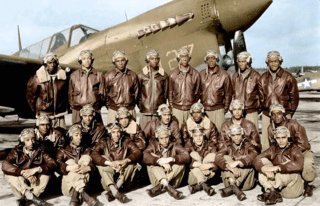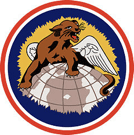HBD USAF
The U.S. Air Force Birthday: 9/18

The U.S. Air Force was officially established on September 18, 1947, and has since proven itself as an unrivaled force in aviation. However, its roots extend back to the early 20th century, reflecting a rich history and heritage.
Prior to this new organization, aircraft and pilots had been under the purview of the U.S. Army, which purchased its first airplane from Orville Wright in 1909
Between 1909 — when that the US military purchased its first aircraft — and 1947, the U.S. Air Force did not exist as a separate and independent military service organization. It went through a series of designations: Aeronautical Section, Signal Corps (1909); Aviation Section, Signal Corps (1914); United States Army Air Service (1918); United States Army Air Corps (1926), and United States Army Air Forces (1941).
World War II highlighted the crucial role of airpower and underscored the need for a fundamental reorganization of the U.S. armed forces. In response to these lessons, the U.S. government undertook a significant restructuring to improve coordination and efficiency. This transformation led to the creation of the Department of Defense, which consolidated the military branches under a unified command structure, featuring a strong Joint Chiefs of Staff comprised of Army, Navy, and Air Force leaders.
In 1947, President Harry S. Truman signed the National Security Act, which not only established this new defense organization but also marked the formal creation of the U.S. Air Force as a separate and independent service branch.
This pivotal development granted the Air Force an equal status alongside the U.S. Army and U.S. Navy, solidifying its role in national defense and setting the stage for its future as a premier airpower force.
The reorganization significantly enhanced the strategic, operational, and tactical capabilities of the U.S. military, ensuring a cohesive and effective approach to national security in the evolving geopolitical landscape of the post-war era.
The Tuskegee Airmen

The Tuskegee Airmen were a group of African American military pilots (fighter and bomber) and airmen who fought in World War II. They formed the 332nd Fighter Group and the 477th Bombardment Group (Medium) of the United States Army Air Forces (USAAF).
The name also applies to the navigators, bombardiers, mechanics, instructors, crew chiefs, nurses, cooks, and other support personnel. The Tuskegee airmen received praise for their excellent combat record earned while protecting American bombers from enemy fighters. The group was awarded three Distinguished Unit Citations.
All black military pilots who trained in the United States trained at Griel Field, Kennedy Field, Moton Field, Shorter Field, and the Tuskegee Army Air Fields.[2] They were educated at the Tuskegee Institute (now Tuskegee University), located near Tuskegee, Alabama Of the 922 pilots, five were Haitians from the Haitian Air Force and one pilot was from Trinidad.[3] It also included an airman born in the Dominican Republic and one born in Jamaica.[4][5]
The 99th Pursuit Squadron (later the 99th Fighter Squadron) was the first black flying squadron, and the first to deploy overseas (to North Africa in April 1943, and later to Sicily and other parts of Italy). The 332nd Fighter Group, which originally included the 100th, 301st and 302nd Fighter Squadrons, was the first black flying group. It deployed to Italy in early 1944. Although the 477th Bombardment Group trained with North American B-25 Mitchell bombers, they never served in combat. In June 1944, the 332nd Fighter Group began flying heavy bomber escort missions and, in July 1944, with the addition of the 99th Fighter Squadron, it had four fighter squadrons.




The 99th Fighter Squadron was initially equipped with Curtiss P-40 Warhawk fighter-bomber aircraft. The 332nd Fighter Group and its 100th, 301st and 302nd Fighter Squadrons were equipped for initial combat missions with Bell P-39 Airacobras (March 1944), later with Republic P-47 Thunderbolts (June–July 1944) and finally with the aircraft with which they became most commonly associated, the North American P-51 Mustang (July 1944). When the pilots of the 332nd Fighter Group painted the tails of their P-47s red, the nickname “Red Tails” was coined. The red markings that distinguished the Tuskegee Airmen included red bands on the noses of P-51s as well as a red empennage; the P-51B, C and D Mustangs flew with similar color schemes, with red propeller spinners, yellow wing bands and all-red tail surfaces.
The Tuskegee Airmen were the first African-American military aviators in the United States Armed Forces. During World War II, black Americans in many U.S. states were still subject to the Jim Crow laws[N 1] and the American military was racially segregated, as was much of the federal government. The Tuskegee Airmen were subjected to discrimination, both within and outside of the army.
Before the Tuskegee Airmen, no African-American had been a U.S. military pilot. In 1917, African-American men had tried to become aerial observers but were rejected.[7] African-American Eugene Bullard served in the French air service during World War I because he was not allowed to serve in an American unit. Instead, Bullard returned to infantry duty with the French.
The racially motivated rejections of World War I African-American recruits sparked more than two decades of advocacy by African-Americans who wished to enlist and train as military aviators. The effort was led by such prominent civil rights leaders as Walter White of the National Association for the Advancement of Colored People, labor union leader A. Philip Randolph and Judge William H. Hastie. Finally, on 3 April 1939, Appropriations Bill Public Law 18 was passed by Congress containing an amendment by Senator Harry H. Schwartz designating funds for training African-American pilots. The War Department managed to put the money into funds of civilian flight schools willing to train black Americans.
War Department tradition and policy mandated the segregation of African-Americans into separate military units staffed by white officers, as had been done previously with the 9th Cavalry, 10th Cavalry, 24th Infantry Regiment and 25th Infantry Regiment. When the appropriation of funds for aviation training created opportunities for pilot cadets, their numbers diminished the rosters of these older units.
In 1941, the War Department and the Army Air Corps, under pressure — three months before its transformation into the USAAF — constituted the first all-black flying unit, the 99th Pursuit Squadron.
Because of the restrictive nature of selection policies, the situation did not seem promising for African-Americans, since in 1940 the U.S. Census Bureau reported there were only 124 African-American pilots in the nation.
The exclusionary policies failed dramatically when the Air Corps received an abundance of applications from men who qualified, even under the restrictive requirements. Many of the applicants had already participated in the Civilian Pilot Training Program, unveiled in late December 1938 (CPTP). Tuskegee University had participated since 1939.
On 29 March 2007, the Tuskegee Airmen were collectively awarded a Congressional Gold Medal at a ceremony in the U.S. Capitol rotunda.,The medal is currently on display at the Smithsonian Institution. The airfield where the airmen trained is now the Tuskegee Airmen National Historic Site.
Thurgood Marshall, the future Supreme Court justice, got his start defending Tuskegee bomber trainees. The 477th Bombardment Group was formed in 1944 to extend the so-called “Tuskegee experiment” by allowing black aviators to serve on bomber crews. The aim was to send pilots—many of them veterans of the original Tuskegee fighter group—back to the States for training on B-25 bombers. While in Indiana, some of the African-American officers were arrested and charged with mutiny after entering an all-white officers’ club. Marshall, then a young lawyer, represented the 100 black officers who had landed in jail as a result of the confrontation. The men were soon released (although one was later convicted of violent conduct and fined).

LIBERIA’S FORCE
Genre: AsaniSurreal Sub Genres: Alternate History, Military Science Fiction, Conspiracy Thriller
Socially Relevant Themes: Military Industrial Complex, Unlawful Human Experimentation, Human trafficking
GIDEON MARCUS QUEEN, an African-American agent, under order from the President, in a covert operation with MI6, the Mossed and The Island of Boltinoff, protects America’s interests in Monrovia, Liberia “Land of the Free” in the development of the technology for Vril Power, Dark Matter, Dark Energy, the source behind anti-gravity, propulsion aircrafts.
Piloted by Talladega Airmen; Cpt. Jacob Laurence, Lt. Saul A. Ensign, Lt. John F. Foyer, Lt. Remington A. Ingram, Lt. Felix C. Sutton Jr., Jessie Doleman, Emily Gerhart, Baroness Alyssa Raymonde Laroche, Francisco Kovačević, Lt. Oscar Moncla, Jr., the best pilots from different eras, all declared abducted by UFOs, missing or killed in action, actually selected to fly a different kind of plane. His day ends when America’s safe. His day never ends.
The best pilots from different eras, all declared abducted by UFOs, missing or killed in action, actually selected to fly a different kind of plane.
His day ends when America’s safe. His day never ends.
They fight the hidden war
LIBERIA’S FORCE














